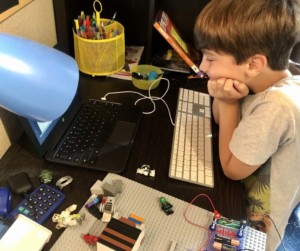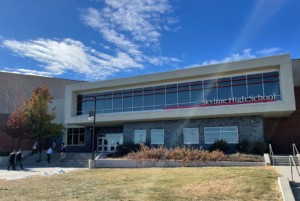The Art of Teaching Science

If only teaching K-12 science was itself a science – assess student knowledge deficits and remedy them. This “knowledge deficit” model has been shown ineffective time and again. Most teachers already know that; it’s why they work so hard to develop lesson plans and activities tailored to their students.
So here’s a new tool for any teacher who’s spent evenings and weekends trying to find a lesson that’s the perfect fit for their class: it’s called MOSART, brought to you by the Harvard-Smithsonian Center for Astrophysics. MOSART stands for Misconceptions-Oriented Standards-Based Assessment Resources for Teachers, but don’t let the government-report-sounding name deter you. Based on the National Research Council’s science standards and research on science education, MOSART is a free tool that, after a set of multiple choice tests and a few clicks in your favorite spreadsheet program, gives you incredible views into the brains of your students.
Teachers know that students don’t arrive in class as blank slates, and research on students’ prior knowledge in a variety of subjects is available in the academic literature. What MOSART does is reveal students’ prior knowledge and misconceptions, particularly, their areas of strength and weakness in a particular subject. (MOSART currently offers tests for Physical Science, Earth Science, Astronomy/Space Science, and Life Science for grades K-4 and 5-8; and Physics, Chemistry, Earth Science, and Astronomgy/Space Science for grades 9-12.)
MOSART’s multiple choice tests offer five options that are each based on cognitive science: “many items require a choice between accepted scientific concepts and misconceptions that have been well documented in the science education literature.” Students’ correct and incorrect answers reveal their current state of thinking about scientific concepts, allowing teachers to pinpoint areas of weakness and choose appropriate instruction and activities. Anyone familiar with the classic video A Private Universe (Schneps & Sadler 1987) will understand the wide range of what students “know” about a topic. For another example, take a look at these MIT graduates attempting to power a light bulb with a battery and some wire (bottom right video; stick around for an examination of their thinking at 2:00).
Better yet, there’s empirical evidence that MOSART helps. A paper published last Thursday in the American Educational Research Journal looked at 9,556 students of 181 middle school physical science teachers who used MOSART. The study found that, when teaching concepts that students may already have misconceptions about, teachers’ knowledge of students’ ideas may be “the critical component that allows teachers to construct effective lessons.” Basically, it’s not enough to be well-versed in a subject and teach it accurately. The study also found that “identifying and remediating holes in the teachers’ knowledge may be more helpful for the science teachers’ effectiveness in the middle school classroom than developing a deep understanding” of any particular subject. Teachers can take the MOSART multiple choice tests themselves (instructions for teachers can be found on MOSART’s website) and learn not only where holes in their subject matter knowledge might be, but also what common misconceptions about a scientific concept they are unaware of. “This particular component … may allow teachers to construct experiences, demonstrations, experiments, or discussions that make students commit to and then test their own ideas.”
Make yourself a free account on MOSART, view four quick instructional videos, and you’ll have access to all of MOSART’s materials.






0 Comments
Leave a Comment
Your email address will not be published. All fields are required.